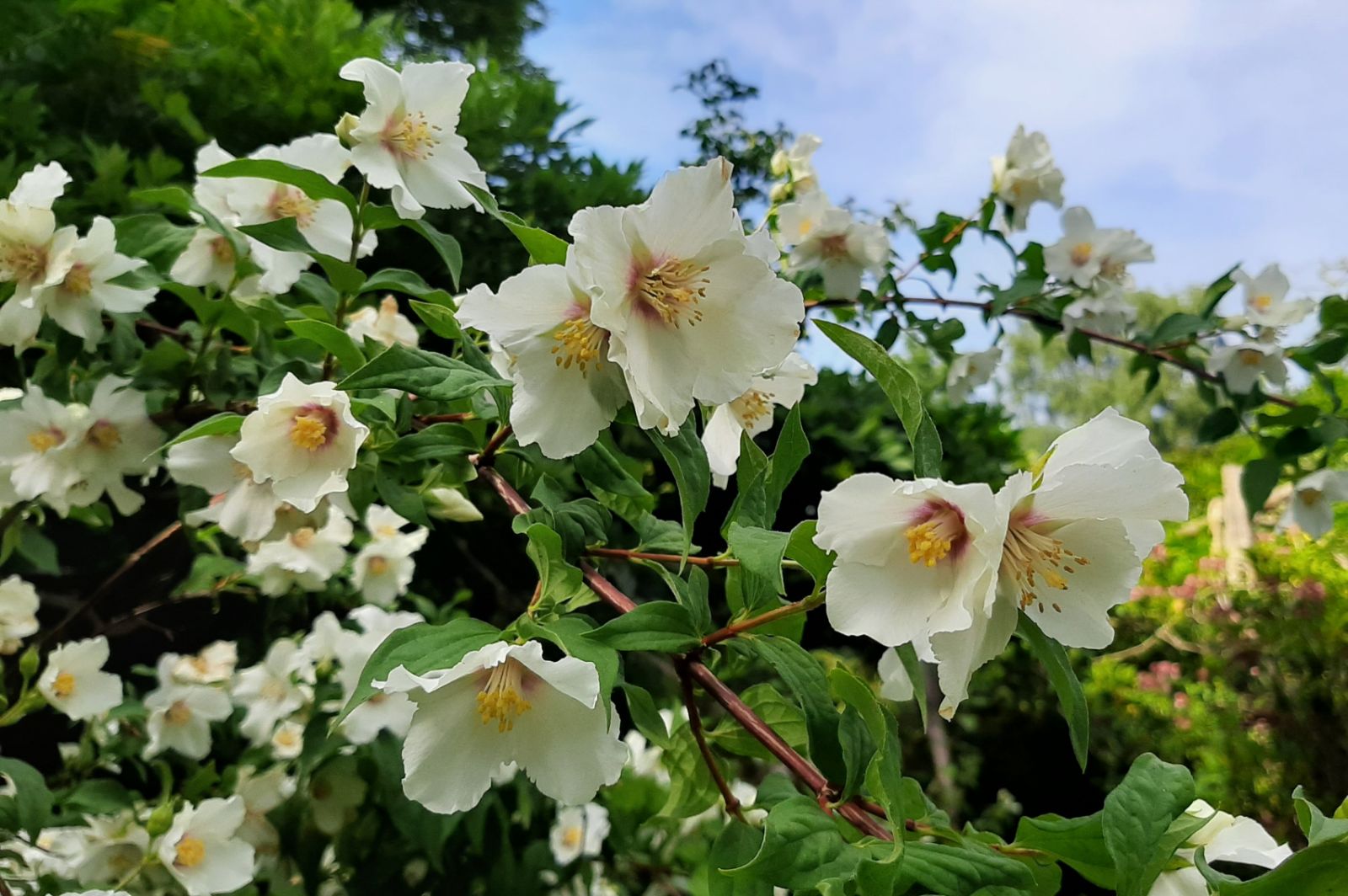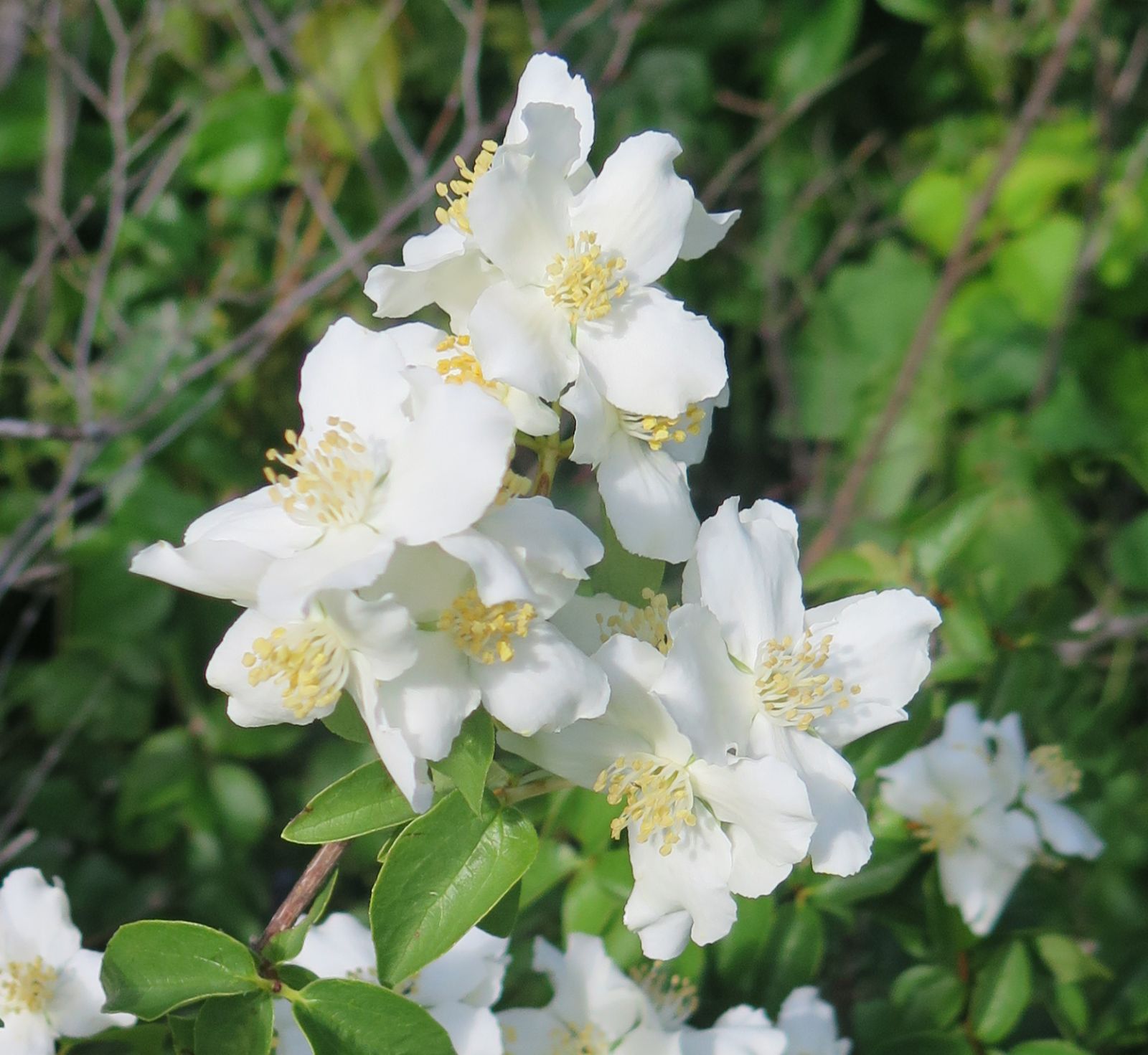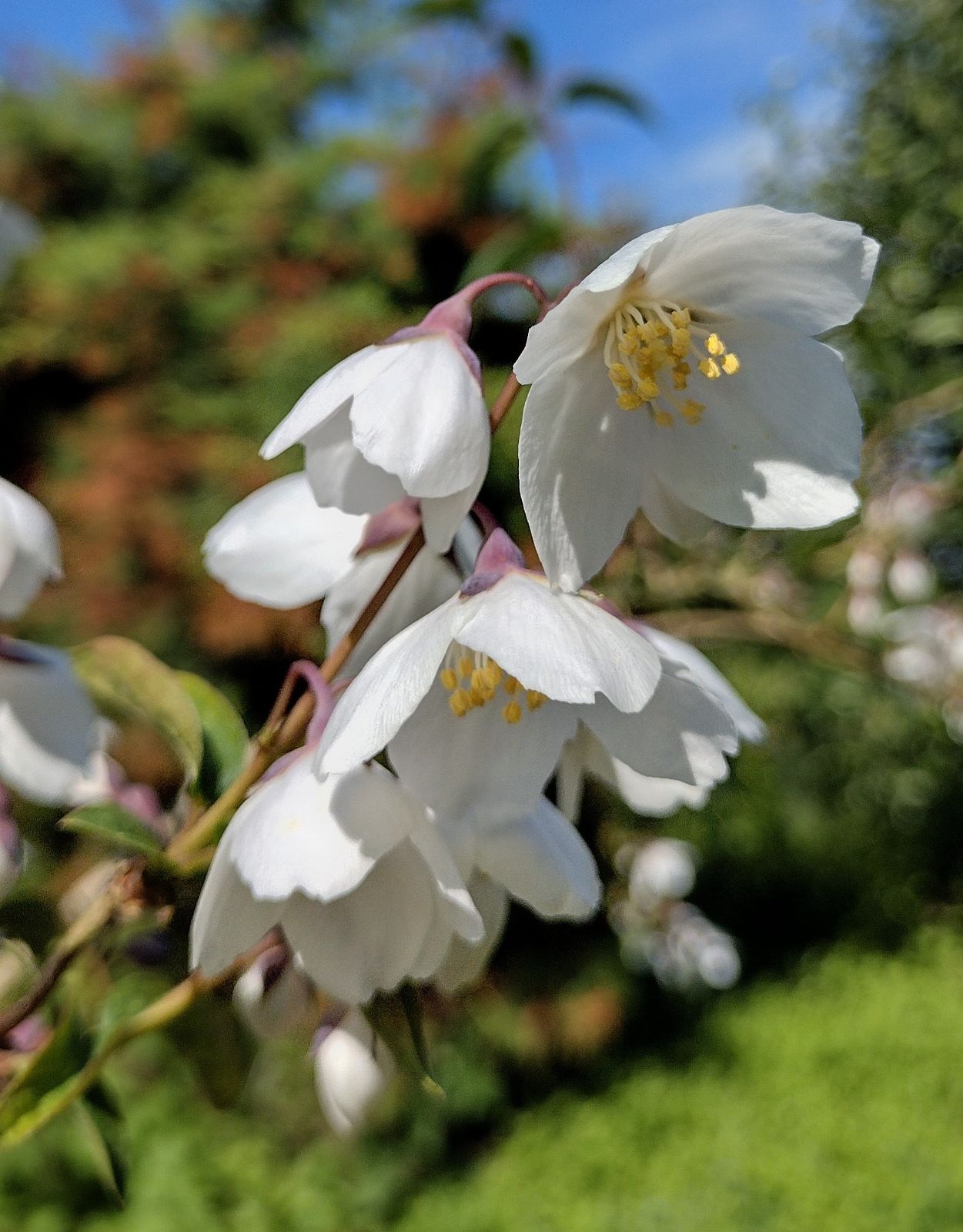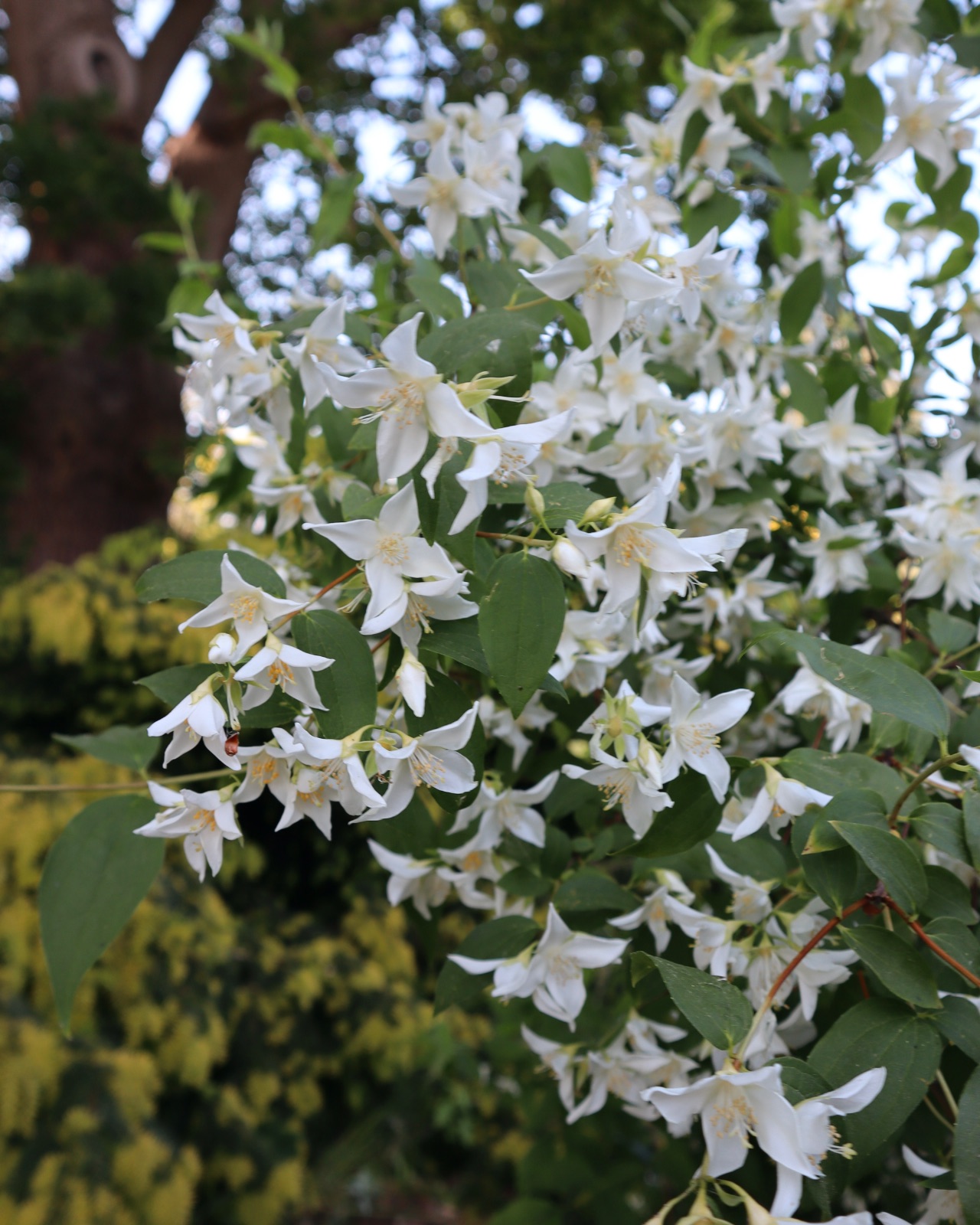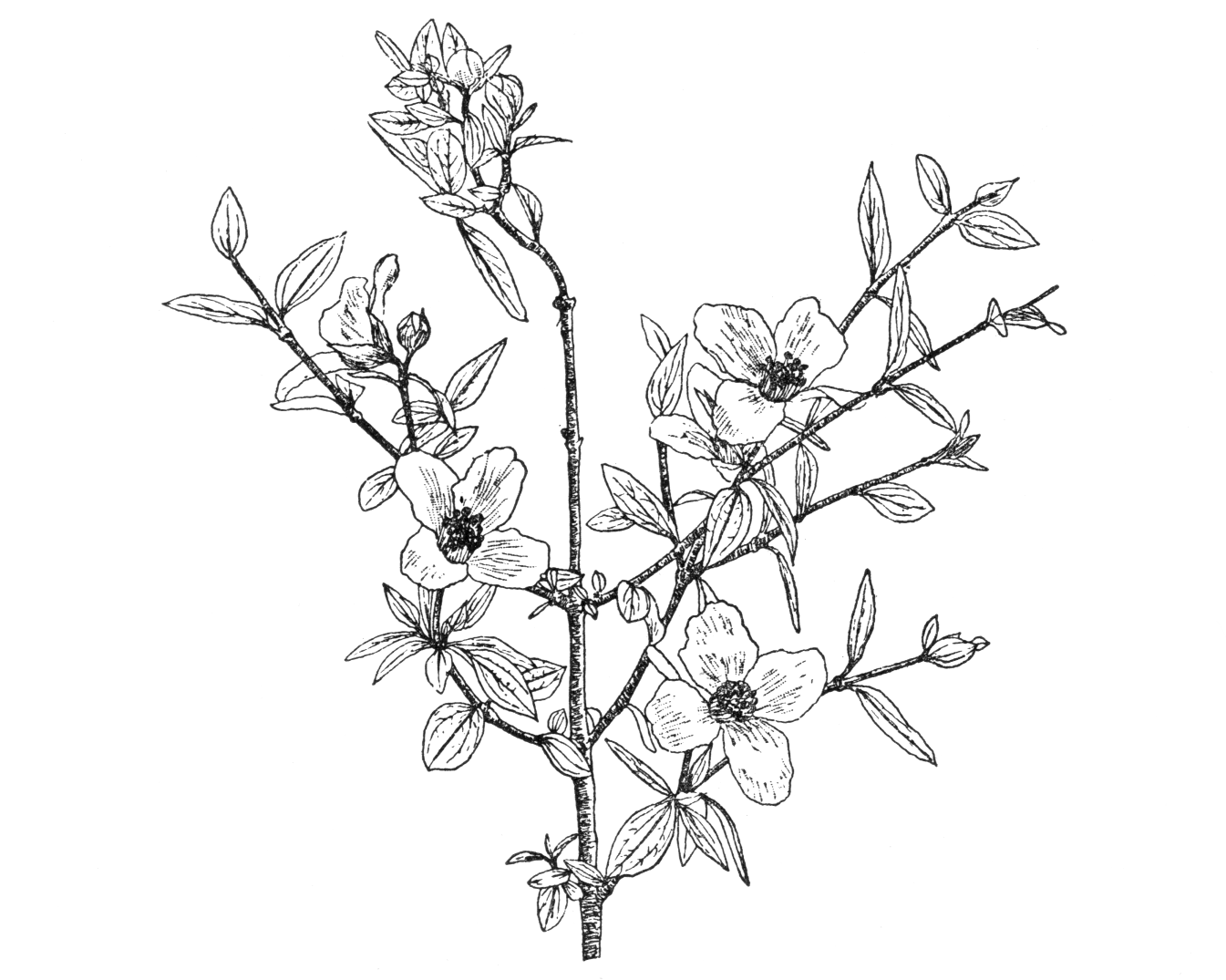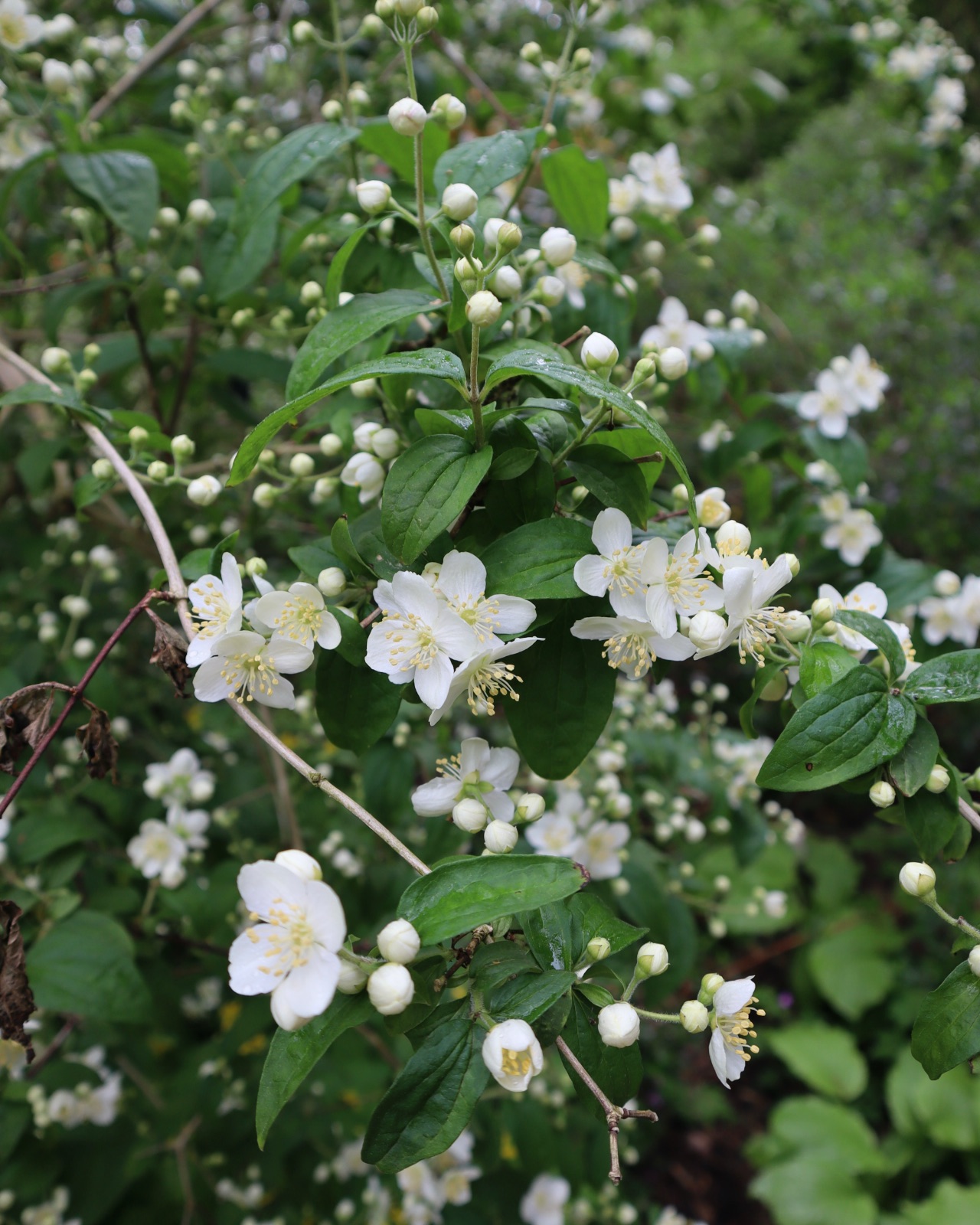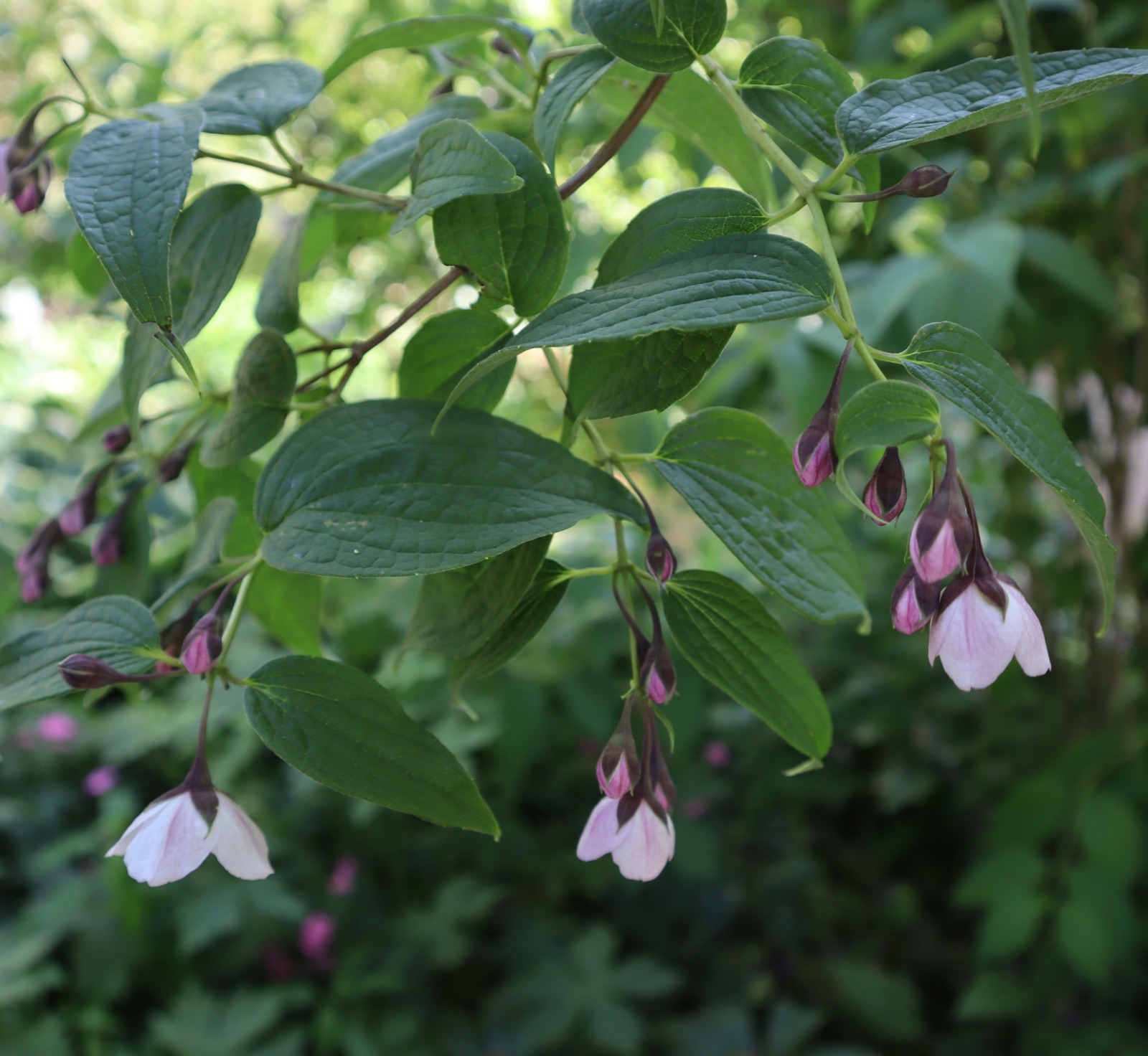Philadelphus
Credits
Article from Bean's Trees and Shrubs Hardy in the British Isles
Recommended citation
'Philadelphus' from the website Trees and Shrubs Online (treesandshrubsonline.
Family
- Philadelphaceae
Species in genus
- Philadelphus argyrocalyx
- Philadelphus californicus
- Philadelphus coronarius
- Philadelphus delavayi
- Philadelphus 'Falconeri'
- Philadelphus hirsutus
- Philadelphus incanus
- Philadelphus inodorus
- Philadelphus insignis
- Philadelphus lewisii
- Philadelphus magdalenae
- Philadelphus mexicanus
- Philadelphus microphyllus
- Philadelphus pekinensis
- Philadelphus pubescens
- Philadelphus satsumi
- Philadelphus schrenkii
- Philadelphus sericanthus
- Philadelphus: The Hybrids
- Philadelphus tomentosus
- Philadelphus zeyheri
A genus of deciduous shrubs most nearly related to Deutzia, from which they chiefly differ in having four petals and four calyx-lobes, and twenty to forty stamens, whilst in Deutzia the petals and the calyx-lobes are in fives and the stamens ten; the hairs in Deutzia, too, are stellate, in Philadelphus they are simple. Leaves opposite, stalked, often three- or five-nerved. Flowers often strongly scented, mostly pure white, occasionally yellowish or blotched with purple at the base of the petals. The inflorescence is always terminal, but varies from a solitary flower to a raceme or panicle. Fruit usually four-valved, dry, and woody, splitting lengthwise to liberate the numerous seeds. Flowers are not infrequently seen with the flower-parts in fives. In the majority of species the leaf-buds on the young shoots are completely hidden by the base of the leaf-stalk.
Perhaps no genus of shrubs presents so many difficulties in the differentiation of its species as this. A few of them are well marked, like P. microphyllus, with small entire leaves; P. hirsutus, with exposed leaf-buds and united stigmas; and P. mexicanus, with similar leaf-buds but divided stigmas; but the majority offer no really distinctive characters. The difficulty is further increased by free hybridisation under cultivation, so that now a large proportion of cultivated plants are not species at all, but garden hybrids.
These beautiful shrubs, commonly known as “Syringa” – a name which properly belongs to the lilacs – need no recommendation. They contribute to our gardens their most attractive pictures during June and July, when the great flowering time of shrubs is rapidly waning. They are useful in shrubberies where the vigorous ones can take care of themselves in competition with most things, and they also make very charming objects isolated on lawns. They grow best in a loamy soil, in a position at least moderately sunny, and are easily increased by cuttings made of softish young wood placed in bottom heat. They flower on short lateral twigs which spring from the shoots made the previous year, so that whatever pruning has to be done should consist of taking out old branches that have flowered and leaving the long, vigorous shoots of the current year to provide the succeeding crop of blossom. No mere shortening back should be done unless from considerations of space.
The main work on the genus is: S.-Y. Hu, ‘A Monograph of the Genus Philadelphus’, Journ. Arn. Arb., Vol. 35 (1954), pp. 275–333; Vol. 36 (1955), pp. 52–109, 325–68; Vol. 37 (1956), pp. 15–90.
From the Supplement (Vol.V)
The cultivated species and hybrids are surveyed by David Wright in The Plantsman, Vol. 2(2), pp. 104–16 (1980).

